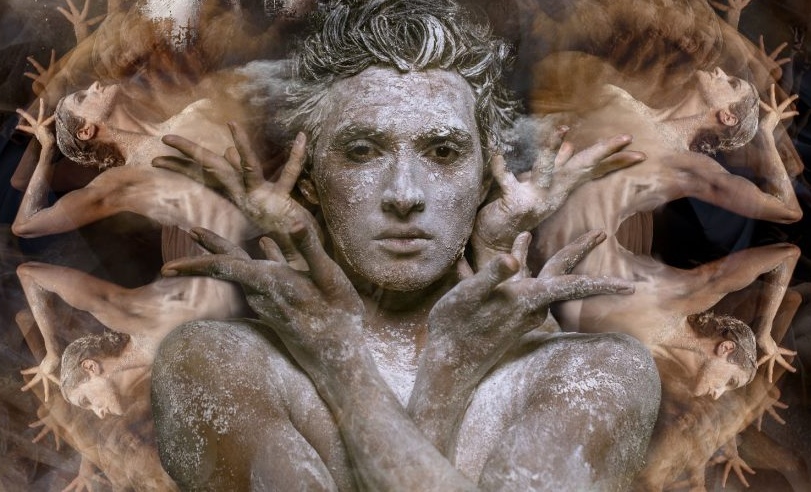
This production is billed as a “re-imagining of the iconic ballet in Indian dance style Bharatanatyam”. And why not? Now well past its centenary, Igor Stravinsky’s 1913 ground-breaking masterpiece could do with some new ground to break.
There is nothing so essentially Russian about the concept of The Rite of Spring that prevents it being appropriated as a narrative by another culture (though there are definite Russian folk themes in the music). If, like me, you have had to Google “Bharatanatyam” to conceptualise how this might work, you will have read that it is a traditional dance form from Southern India that expresses spiritual ideas. So as a dance form it is easy to see why it is a natural fit for The Rite of Spring, and why it would make an interesting artistic exploration. As Disney have been appropriating European cultural treasures for decades now, it is refreshing that this accepted practice of “re-imagining” is getting attention from more traditional, diverse and sophisticated quarters. I suppose the litmus test is what the re-imagining does to augment or improve the experience, and at what cost.
Focussing on the positives, the dance style really does suit the dramatic orchestration. The Bharatanatyam dance style is a perfect accentuation of the dramatic orchestration. The predominantly rigid torso, bent-knee and flat-footed stances emphasised the rhythms and the choreography brilliantly reflected the dynamics and syncopations of the recorded soundtrack. The dancers were extremely tight as a unit and performed with relentless energy, intensity and focus. Their small hand gestures were like visual imagist poetry in suggesting new life in flight and in bloom.
Some of the choreography was quite easy to interpret. Alas, not all of it. Quite a lot of the time I found myself admiring the dancing while wondering what on earth was going on or being said. Sure, much of this will be due to my lack of knowledge of Bharatanatyam but looking around the audience I don’t think I was in a minority on that score. Also, I was quite baffled by the overall presentation. It began with six dancers and a verbal and percussive soundtrack. A second dance had a pre-recorded 1980’s synth-pop feel reminiscent of a mash-up between Kraftwerk and the Human League. Where was Stravinsky in all of this? I was utterly confused. Then, at last a real musician. A cellist. A very good one too. But she didn’t play Stravinsky either (I am almost certain it was Bach, but there were no programme notes). There was no dancing while she provided an excellent but inexplicable fifteen-minute solo recital. It was almost as if the first two dances and the recital were thrown in to fill out the programme and elongate the experience. But nothing was clear, and I am still none the wiser.
Despite these criticisms, I was very impressed with how well the dancing captured the intensity of Stravinsky’s music. Overall, the lasting impression was a positive one, and I would be glad to see more Bharatanatyam dancing productions. The choreographer, Seeta Patel, is certainly onto something in looking at such exciting cultural fusions. ★★★☆☆ Robert Gainer 15th May 2019

